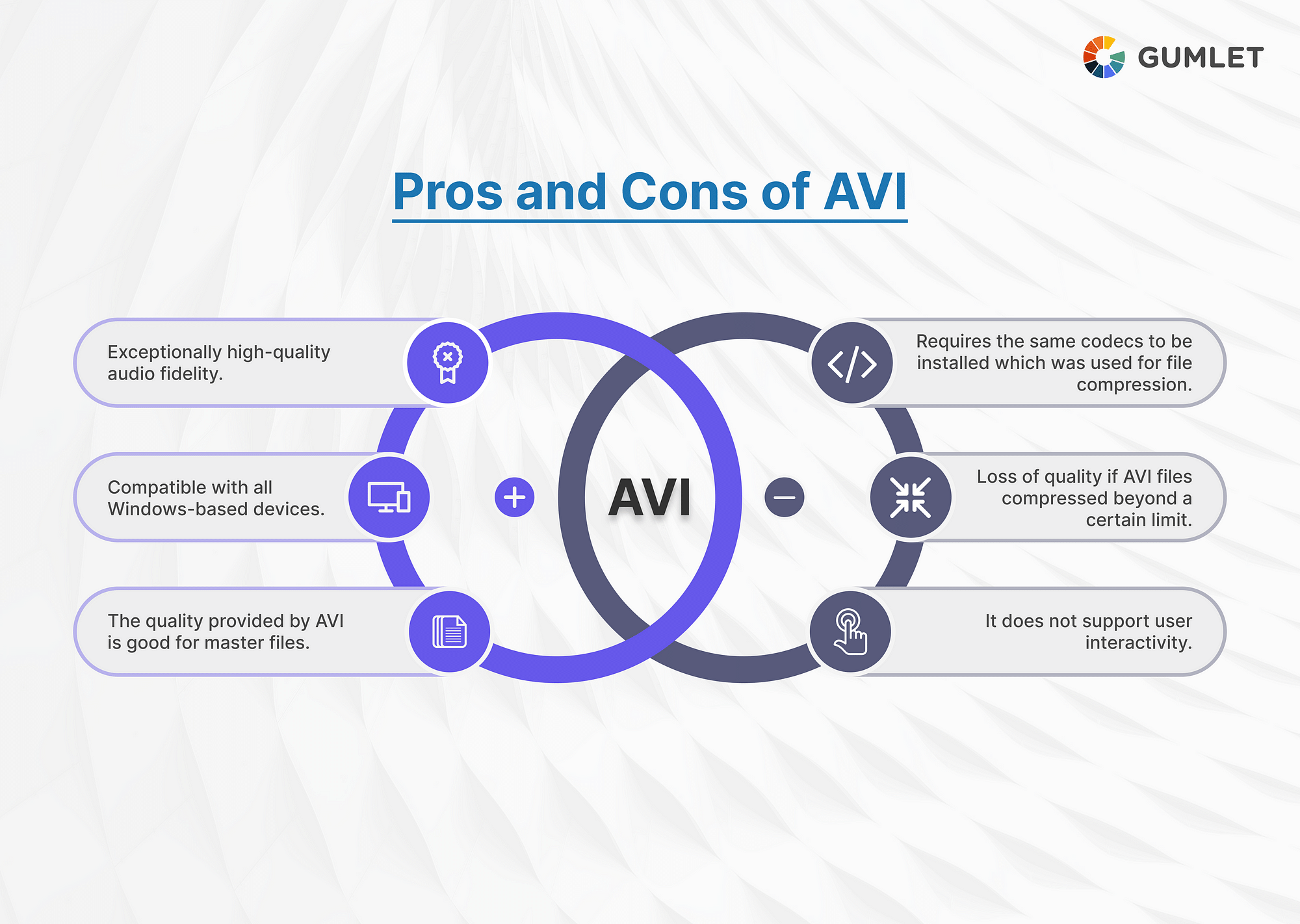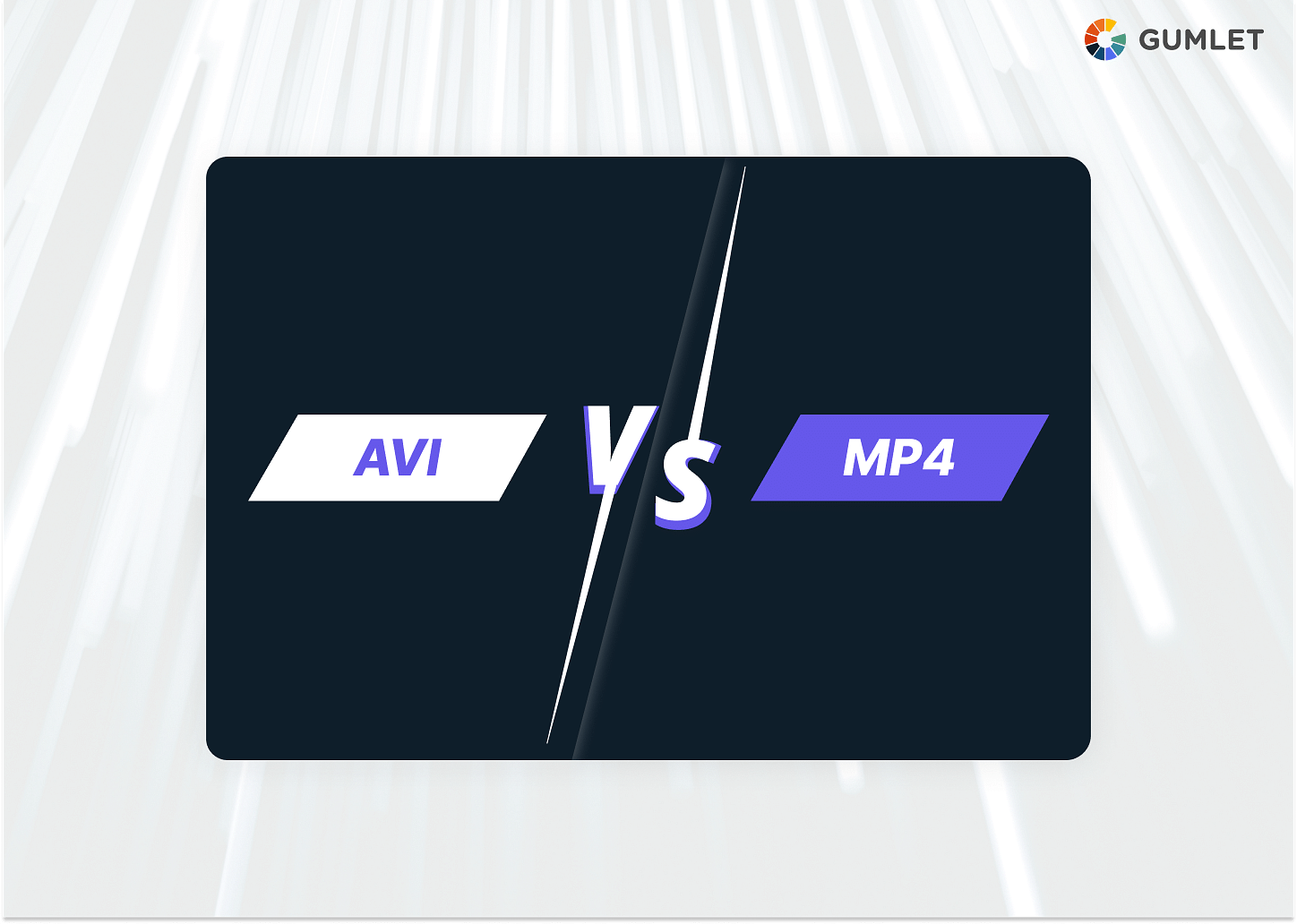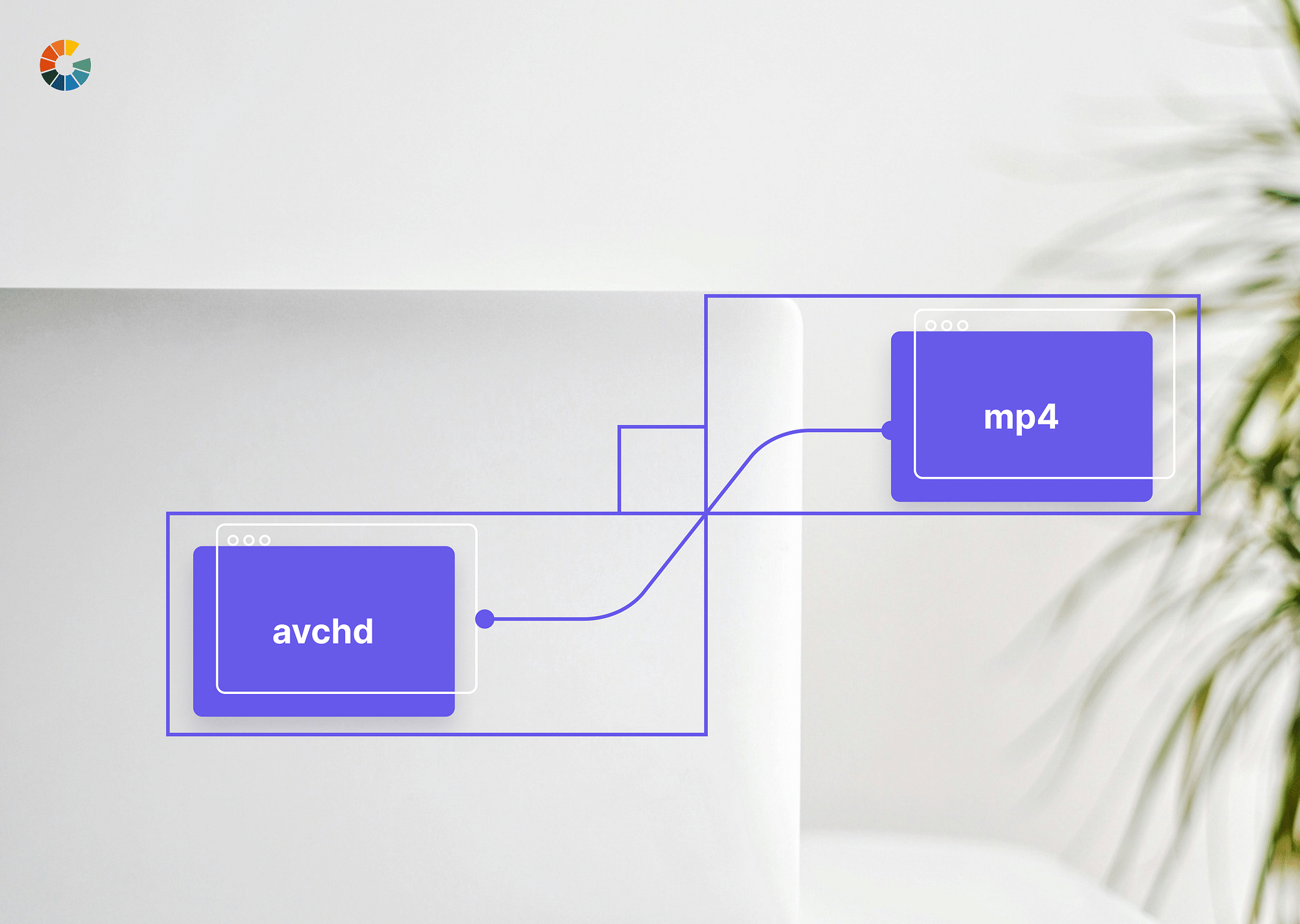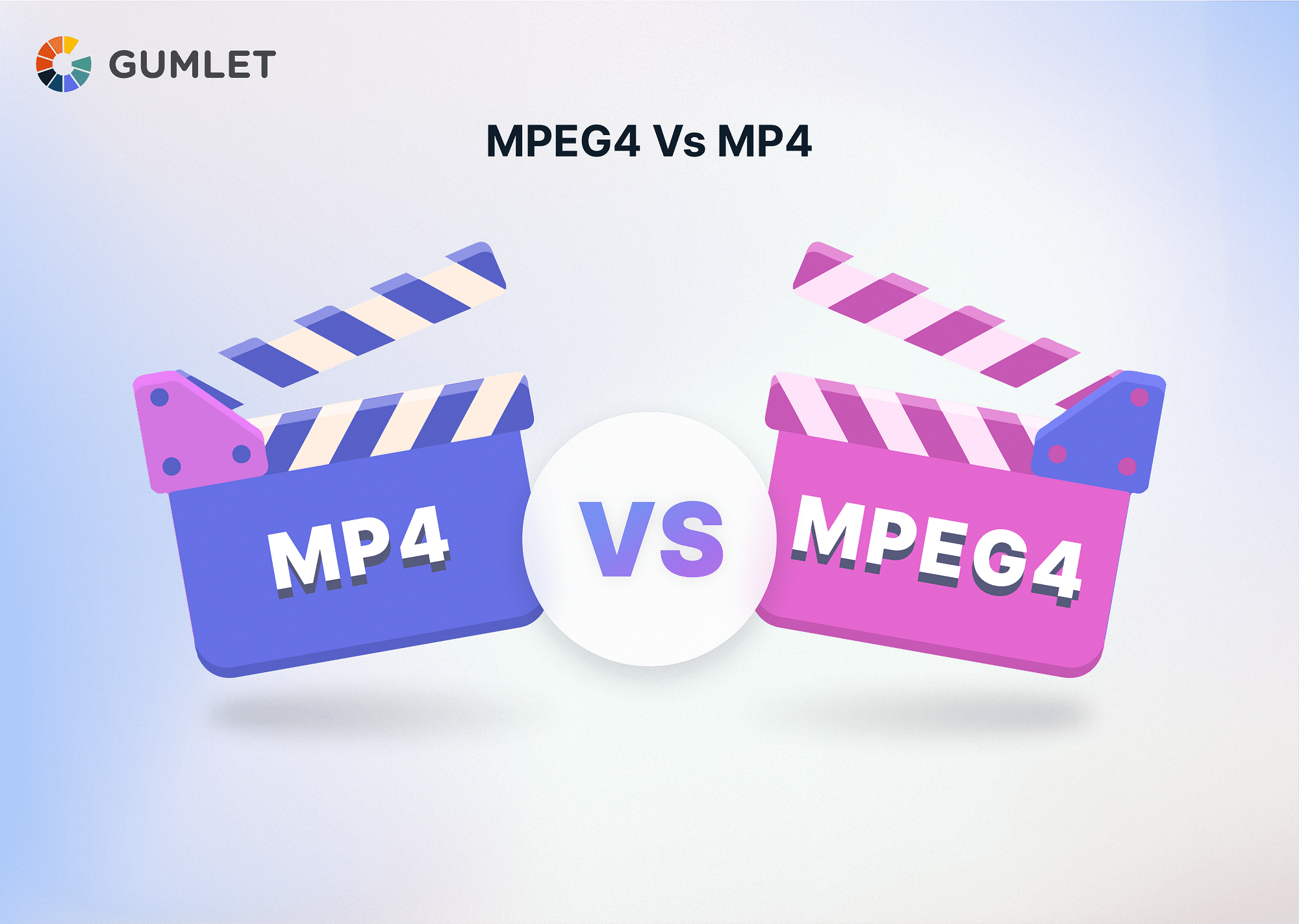AVI and MP4 are two of the most commonly used file formats. As a result, people tend to need clarification as to which of these formats suits their purpose better.
Both AVI and MP4 are popular digital video formats; However, MP4 is generally considered to be the better of the two. MP4 offers higher quality video and audio, as well as a smaller file size, making it more suitable for streaming and sharing online. Additionally, MP4 is more widely supported than AVI, meaning it can be played on more devices.
In this article, let's dive deep into both these file formats and understand what they are, how they differ, and what use cases they suit.
What is AVI?
AVI is an abbreviation for Audio Video Interleave. This is old but still a very common video file format. Microsoft developed it way back in the 90s and has been around ever since. It is a container format which means it was designed to hold video and audio streams and metadata through a single file. AVI is not a codec and can't be used as a standalone program to compress video and audio. However, it was designed to work with either DirectX or QuickTime, which means you can use it to compress video and audio.
What is MP4?
MP4 stands for MPEG-4 Part 14. MPEG-4 stands for Moving Picture Experts Group and is a set of standards for video compression. MPEG-4 Part 14 is one of the sub-standards of MPEG-4 used for video compression. MP4 is the most widely used format for transferring video content online. It is supported by almost all modern devices and can be used to create video compressed at different data rates. This means you can use MP4 to save more data than AVI while keeping the same video quality. MPEG-4 Part 14 is a hybrid format combining the best of two compression methods. It uses a mixture of lossless and lossy compression to achieve the most efficient compression rate without losing visual quality.
Differences between AVI and MP4
AVI is a container format that can hold one or more audio and video streams and metadata inside a single file. MP4 is a file format designed for compressing video and audio. Both formats are widely used for storing and streaming video content. AVI and MP4 are the two most popular formats for videos.
AVI can be used for storing and compressing audio and video data. However, it is less efficient when it comes to compression compared to MP4. This is because MP4 is designed to be a purely lossy format, while AVI is a hybrid format that offers both lossless and lossy compression. Another difference between the two formats is that MP4 supports more video and audio codecs than AVI. This means that MP4 can store more video and audio quality types.
Comparison Table
| Parameter | AVI | MP4 |
|---|---|---|
| Compression Quality | Less or no compression | Highly compressed |
| File Size | Large size | Smaller size |
| Compatibility | Microsoft products and consoles. No Apple devices. | PC, Android, iOS, macOS, etc. |
| Codecs | DivX, Xvid | MPEG-1,2,4H.264/AVC, H.265/HEVCVP8,VP9 |
| Quality | Supports till FHD+ 1080p resolution. | Supports up to 4K UHD resolution. |
| Players Supported | All Windows OS-based players are supported. | More or less all players are supported. |
Video Quality
A few factors, such as bit rate, resolution, and codec, determine the quality of a video. The bit rate is the amount of data used to compress the video file. The resolution refers to the size of the pixels in the video. The codec is the algorithm for compressing and decompressing the audio or video data. AVI and MP4 use compression to achieve better compression rates while maintaining the same video quality. This means that the video file size will be smaller while maintaining the same visual quality.
File Size
The file size is determined by the amount of data used to store the video. The bit rate and the resolution of the video calculate this. AVI and MP4 use compression to achieve better compression rates while maintaining the same video quality. This means that the video file size will be smaller while maintaining the same visual quality. AVI is a hybrid format that uses lossless and lossy compression. Lossless compression is a method that only compresses video data with no loss of data. This means that the original data can be reproduced exactly.
Lossy compression is a method that compresses the video data and then removes some of the data to achieve better compression rates. However, the algorithm used in the compression process is designed to remove the least amount of data needed to achieve the desired compression ratio. This means that the video file size will be smaller than the same video using a lossless compression method. MP4 is a purely lossy format that uses a mixture of lossless and lossy compression methods to achieve the most efficient compression rate without losing visual quality. This means that the video file size will be smaller than the same video using a lossless compression method.
Video Supported
MP4 can support a wide variety of video codecs which means it can store more video quality types. AVI supports fewer video codecs which means it can store fewer video quality types. This is because AVI is a hybrid format that uses both lossless and lossy compression methods. This means that the codecs chosen for this format must be balanced to achieve the best visual quality and maximum compression rate.
Audio Supported
AVI supports fewer audio codecs; hence it can store fewer audio quality types. MP4 supports a wide variety of audio codecs which means it can store more audio quality types. This is because MP4 is a purely lossy format that uses a mixture of lossless and lossy compression methods. This means that the codecs chosen for this format must be balanced to achieve the best audio quality and maximum compression rate.
Platforms Compatibility
MP4 can be played on all platforms and devices. AVI can only be played on certain platforms and devices. This is because AVI is a hybrid format that uses both lossless and lossy compression methods. This means that the codecs chosen for this format must be balanced to achieve the best visual quality and maximum compression rate.
Overview of AVI
An AVI file is a multimedia file type primarily used to store audiovisual data. The original AVI format was created in the 1990s by the Microsoft corporation, and it quickly became one of the most popular file types for storing video and audio content. The AVI format is a combination of different video and audio compression codecs. You can use an AVI file to store video from a webcam or digital video camera, and it's also commonly used for storing Internet content like YouTube videos and Netflix films. AVI files can also store audio files like music or podcasts. They are often used for software distribution for both desktop and mobile devices. To play an AVI file, you must install a video player that supports the AVI format. Most computers and mobile devices have video players that can play AVI files, but they are rarely the best option.

Advantages and Disadvantages
Here are some of the advantages as well as disadvantages of AVI.
Advantages:
- Exceptionally high-quality audio fidelity.
- Since it's developed by Windows, it is compatible with all Windows-based devices and platforms.
- Most widely used for promos, short movies, advertisements, etc.
- The quality provided by AVI is good for master files.
Disadvantages:
- AVI requires the same codecs to be installed on the machine which was used to compress the file.
- AVI files tend to be larger in size than MP4.
- If AVI files are compressed beyond a certain limit, there is a chance of losing quality.
- It does not support user interactivity.
Application of AVI
AVI files are mainly used to store audiovisual data, like movie or TV shows' video and audio content. You can use AVI files to store video from a digital camera or webcam or store video downloaded from the internet. You can also store audio data in an AVI file, like music or podcasts.
Overview of MP4
MP4 is one of the most popular video file formats. It's used to store audiovisual data in a compressed format that can be easily downloaded and streamed. MP4 files are primarily used for watching videos on the internet but can also be used for storing and distributing video files. There are two versions of the MP4 format. MP4 is the original format, and it was created in the 1990s. As technology advanced, a newer version of the MP4 file type, called MP4, was created much more recently. The MP4 file type is significantly better than the original MP4 file type, but both are very common and often used interchangeably. MP4 files are primarily used for storing and distributing video content online. Several different types of MP4 files can be used for different purposes. The MP4 file type is standard for distributing video content on streaming services like Netflix.
Advantages and disadvantages
Here are some of the key advantages and disadvantages of the MP4 file format.
Advantages:
- It can be easily used on multiple platforms, devices, and OSes.
- It offers a higher degree of compression, resulting in smaller file sizes.
- It supports metadata.
- The file can be integrated with 3D graphics, menus or user navigation options, and other user interaction features.
Disadvantages:
- Audio can sometimes slip out of sync because of codec compatibility issues.
- Playback, as well as editing, requires a lot of computing resources.
Applications of MP4
As mentioned above, MP4 is the standard file type for streaming video content on Netflix. It's also the file type for storing video content on YouTube. If you want to download and store video content for offline viewing, you can use an MP4 file type. Many computer programs use MP4 as the default file type for storing video content. In most cases, you can change the file type, but leaving it as an MP4 file is usually recommended. This is because different file types might only be compatible with some devices.
How to convert AVI to MP4 or MP4 to AVI?
You can convert your AVI files to MP4 files or vice versa using any of the various online tools available for this purpose. These tools make the conversion process very simple. You just need to click a few buttons to select your file and choose the file type you want it to be converted to. If you’re converting an AVI file to MP4, you can choose between different MP4 file types, like MP4 or MP4. If you’re converting an MP4 file to AVI, you can choose between different AVI file types, like AVI or AVI.
AVI vs. MP4, Which is Better for Video Streaming?
As discussed above, AVI is a very old file type created in the 1990s. It's been more than 30 years since it was first created, and many technological advancements have happened since then. This means that AVI files don't use the optimal video encoding for content used today. This means that AVI files tend to be larger than MP4 files and take longer to download.
Because technology has advanced so much since the 1990s, MP4 is the better file type for most people. This is why you see MP4 files being used for streaming video content and AVI files for downloading video content for offline viewing. If you want to store or distribute video content online, an MP4 file type is the best option.
Conclusion
Now that we have discussed AVI and MP4 file types, their advantages and disadvantages, and their applications, it is easy to conclude that MP4 is better than AVI in almost every imaginable way. If you plan to store or distribute video content online, an MP4 file type is the best option. AVI files are still a valid option if you're downloading video content for offline viewing.
FAQs
1. Is AVI the best video format?
AVI offers the highest video quality but also has a larger file size. Hence, it's not a convenient format when it comes to storage.
2. Which is bigger, AVI or MP4?
With respect to file size, AVI is larger than MP4.
3. Does AVI lose quality?
Yes, AVI files can lose quality after compression.
4. Is AVI or MP4 better for YouTube?
AVI and MP4 are both acceptable formats for YouTube, but MP4 is generally recommended because it is more widely supported.




